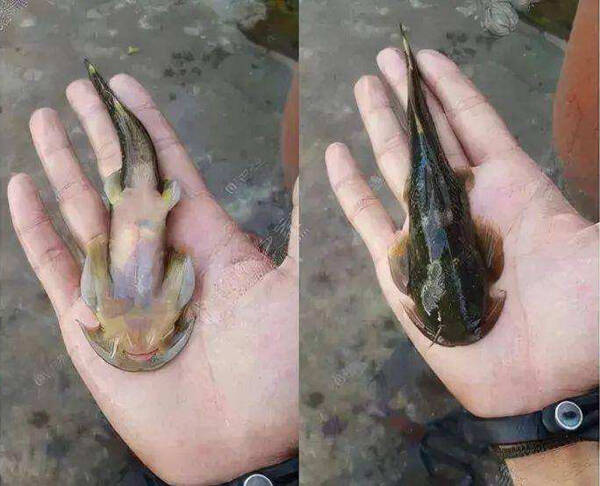It is the species with the highest distribution altitude among the family of fish, and can be found in waters with an altitude of about 4,500 meters.

The black-spotted yao mainly lives in rock crevices and feeds on insect eggs or young fish. The number of chromosomes of the black-spotted protist is 2n=48, and there are two karyotypes, 2n=42 and 2n=44. Xie Congxin et al. studied the samples of black-spotted protist collected from the middle reaches of the Yarlung Zangbo River and found that in addition to the normal liver in the abdominal cavity, the black-spotted protist also has an extra-abdominal liver, an equivalent tissue connected to the liver in the abdominal cavity, between the skin and the body wall muscles. Some scholars believe that the evolution and development of the black-spotted protist is related to the several uplifts of the Qinghai-Tibet Plateau.
When the black-spotted protist lays eggs, it needs a clear water environment with a flow rate between 1.5 meters and 2 meters per second. Spawning takes place at night, requiring a certain degree of water level rise and strong sunlight as stimulation factors, and the spawning water temperature must be above 11 degrees. After the broodstock lays eggs, the eggs adhere to the gravel cracks for hatching and development. The smallest sexually mature male (testis stage IV) individual was 141.7 mm long, 45.2 g in weight, and 1.09% in sex index. The smallest sexually mature female (ovarian stage IV) individual was 146.8 mm long, 66.7 g in weight, and 11.52% in sex index. The corresponding age was 5 years old. The age of first sexual maturity (L50): ♂, 170.1 mm, corresponding to 7 years old; ♀, 150.2 mm, corresponding to 5 years old. Through the analysis of the annual changes of tissue section method and GSI, the breeding time was concentrated in May and June, breeding once a year. From June to August after breeding, the ovaries returned from stage VI to stage III, and in September, the ovaries developed to stage IV for wintering. The frequency distribution of egg diameter showed that the ovarian development type was batch synchronization type, with at least 2 batches of egg diameters in the ovary, and a batch of eggs matured and laid at the same time every year. The spawning type was completely synchronous spawning. The eggs are sticky, and the diameter of mature eggs is between 2.04-3.37mm, with an average of (2.83±0.16)mm. The absolute fecundity of 19 specimens before spawning (body length 151.0-210.0mm) was statistically analyzed, and the range of absolute fecundity was between 525-2058, with an average of (1244±346) grains, and the relative fecundity was (14.7±5.8) grains/g. The absolute fecundity was linearly positively correlated with the body length, expressed as F=13.624L-1187.
In the past 10 years, due to the destruction of wild habitats and other reasons, the resources of the black-spotted catfish have shown a declining trend, and the number of wild populations has continued to decrease. At present, it is only distributed in some sections of the river above 4,200 meters above sea level. The biological population is in a critically endangered state. It has been included in the "China Biodiversity Red List-Vertebrate Volume" as a critically endangered species and is also a key protected research species in the Tibet Autonomous Region. As a plateau cold-water fish, it grows slowly and has difficulty in reproduction. Once the population declines, it is extremely difficult to recover.
Listed in the second level of the "China National Key Protected Wildlife List".
Protect wildlife and eliminate game.
Maintaining ecological balance is everyone's responsibility!